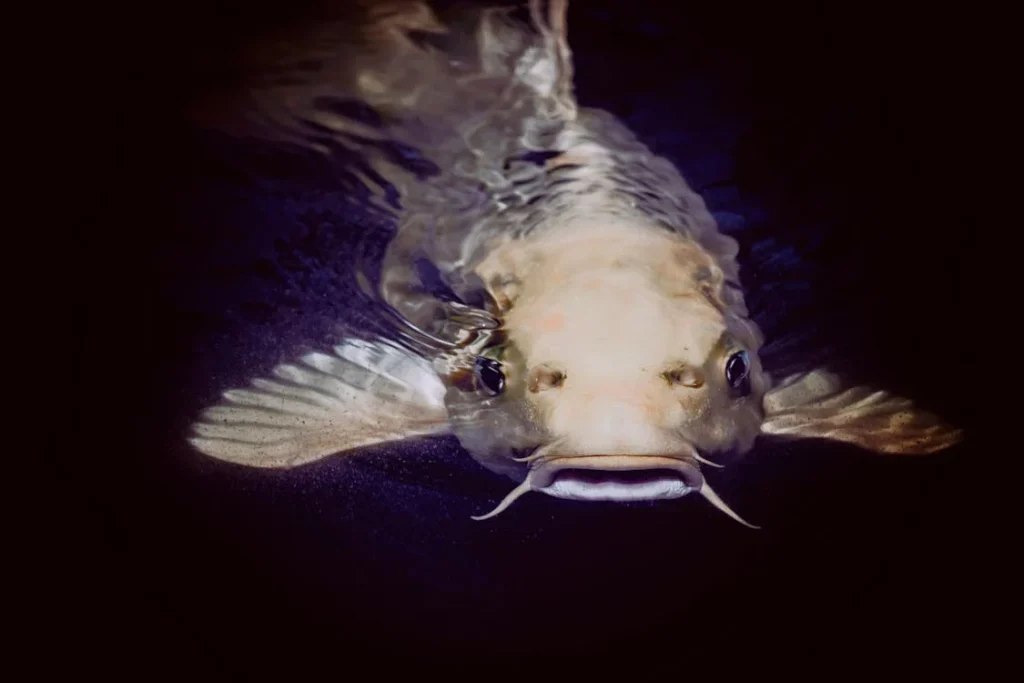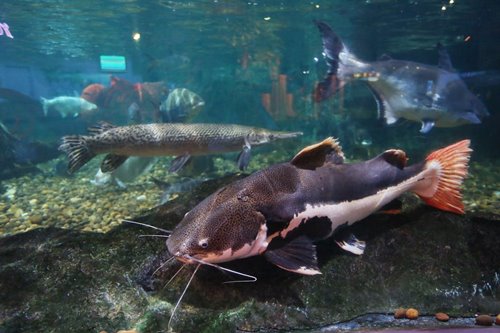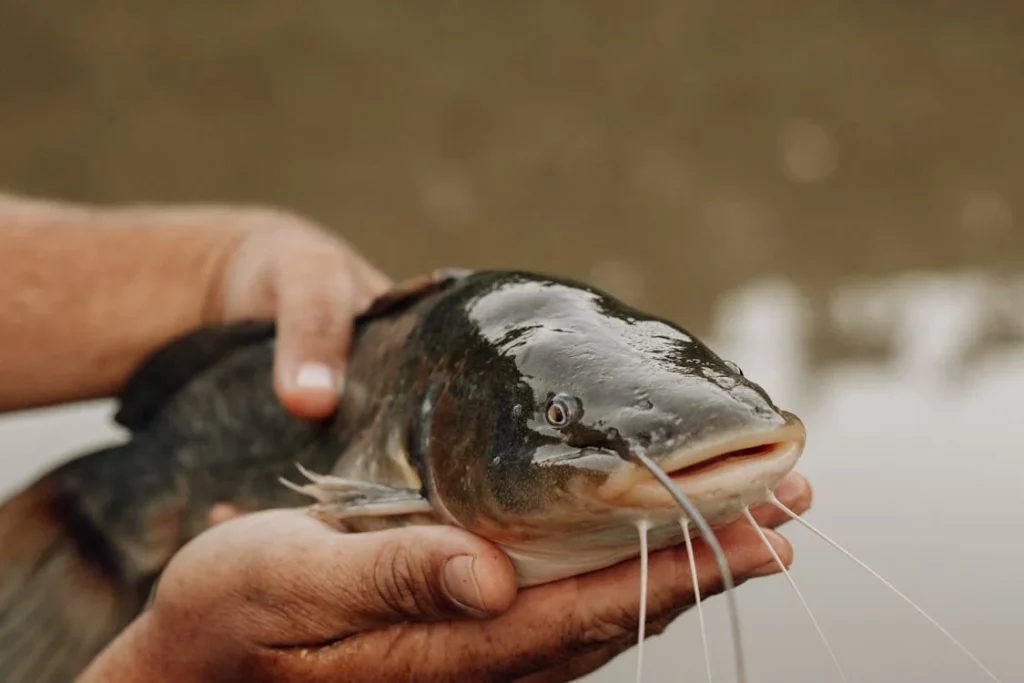
Presentation:
In the immense universe of oceanic animals, catfish possess an extraordinary and captivating spot. These intriguing fish have enthralled the interest of fishermen, aquarists, and nature lovers the same. While many individuals are know about the fundamental attributes of catfish, there are a few less popular realities that shed light on their wonderful transformations, ways of behaving, and variety. In this article, we will dive into the profundities of catfish information and reveal ten charming realities about these confounding animals.
Catfish Uncommon Variety:
Catfish have a place with the request Siluriformes, which involves north of 3,000 known species. They display a mind boggling scope of sizes, shapes, and environments. From the minor Dwarf Corydoras to the tremendous Mekong Goliath Catfish, there is a catfish animal categories for each sea-going climate.
Hairs with a Reason:
Catfish are prestigious for their particular hair like tactile organs called barbels. In spite of mainstream thinking, these barbels are not utilized for stinging or guard. All things being equal, they act as exceptionally delicate material organs, empowering catfish to explore their environmental elements, find food, and even speak with one another.
Exceptional Transformations:
Catfish have various wonderful transformations that empower them to flourish in their freshwater natural surroundings. These variations have permitted them to turn out to find success and various fish species across the globe. Here are a portion of their outstanding transformations:
Barbels: One of the most particular elements of catfish is their barbels. These beefy, bristle like extremities contain taste buds and tactile cells, giving catfish a magnificent feeling of taste and contact. Barbels assist them with finding food, explore their environmental factors, and recognize prey or possible hunters, even in low perceivability conditions.
Ventral Sucking Mouth: Catfish have a ventral mouth situated on the underside of their head. This one of a kind mouth position permits them to benefit from the substrate and rummage for food, like spineless creatures and rotting natural matter, on the riverbed. Their particular mouth structure likewise helps with making a pull impact to proficiently catch prey.
Transformations to Low Oxygen Conditions: Some catfish species have created variations to flourish in conditions with low oxygen levels. They have changed gills or maze organs that permit them to separate oxygen from air. These transformations empower them to make due in stale or oxygen-denied waters, like sloppy lakes or bogs.
Shield like Scales: Certain catfish species, like the Reinforced Catfish (Callichthyidae family), have hard plates covering their bodies, giving security against hunters. These scales go about as a protection system, decreasing the gamble of injury and expanding their possibilities of endurance.
Electric Organs: Electric Catfish and a few different animal types have specific electric organs that create frail electric releases. These releases assist them with exploring their environmental factors, find prey, and speak with other catfish. Electric organs are especially useful in dim or dull conditions where vision is restricted.
Air Relaxing: Some catfish, similar to the Strolling Catfish, have a special transformation known as air relaxing. They have a particular design called a maze organ that empowers them to remove oxygen straightforwardly from the air. This transformation permits them to make due in oxygen-poor or stale waters by breathing environmental oxygen when vital.
These astounding variations of catfish feature their capacity to adjust to different ecological circumstances and take advantage of accessible assets. Their barbels, mouth structure, oxygen extraction instruments, defensive scales, electric organs, and air breathing capacities have added to their prosperity and variety collectively of freshwater fish. By getting it and valuing these variations, we can acquire bits of knowledge into the intricate and captivating existences of catfish.
Antiquated Starting points:

Catfish have a rich developmental history that goes back north of 150 million years. Fossils of early catfish species have been found in different regions of the planet, giving significant experiences into their antiquated beginnings and transformative turn of events.
Astonishing Nurturing Conduct:
A few catfish animal categories, like the mouthbrooding catfish, display wonderful nurturing conduct. In these species, guys gatekeeper and convey their eggs in their mouths until they hatch, giving assurance and oxygen until the fry are prepared to branch out into the world.
Electric Character:
A catfish have the capacity to create electric fields. Electric catfish, like the Electric Dark Blade, utilize these electric releases for route, correspondence, and in any event, hunting. They can radiate electric heartbeats to find prey and explore through dinky waters.
Strange Eating regimen:
Catfish are known for their different and frequently strange weight control plans, displaying their versatility and capacity to take advantage of accessible food sources in their freshwater territories. While the particular eating regimen of a catfish can change contingent upon its species and climate, there are a few surprising instances of catfish taking care of ways of behaving that feature their one of a kind culinary inclinations.
One captivating part of catfish taking care of is their capacity to eat an extensive variety of food things, including both plant and creature matter. Numerous catfish species are pioneering feeders, meaning they will eat anything that food source is promptly accessible. This flexibility permits them to exploit different environmental specialties and guarantees their endurance in different territories.
One remarkable illustration of catfish with an uncommon eating routine is the Electric Catfish (Malapterurus electricus), tracked down in Africa. In spite of fundamentally being flesh eating, Electric Catfish are referred to consume vegetation also. They are equipped for creating powerless electric releases to find prey things, which frequently incorporate little fish, bugs, scavangers, and, surprisingly, amphibian plants.
Another noteworthy model is the Parasitic Catfish (Vandellia cirrhosa), usually known as the Candiru. This little catfish species, tracked down in the Amazon Stream, has acquired reputation for its parasitic taking care of propensities. The Candiru is known to enter the gills or body openings of bigger fish, where it benefits from blood and tissues. While instances of Candiru going after people are uncommon, their taking care of conduct has caught public consideration and prompted different legends and stories.
Some catfish species have created particular taking care of variations to target explicit food sources. For example, the Pictus Catfish (Pimelodus pictus) from South America is outfitted with long, touchy barbels that help it find and catch little spineless creatures, like bugs and worms, in the substrate or water section.
Catfish are additionally known for their rummaging conduct, benefiting from rotting natural matter. This incorporates drinking dead fish, plant material, and other natural flotsam and jetsam tracked down on the riverbed or in stale waters. Their capacity to gobble up remains and waste adds to the environmental equilibrium of their territories by assisting with reusing supplements.
Besides, there are catfish species that display extraordinary taking care of techniques. The Reinforced Catfish (Callichthyidae family), for instance, have a specific mouth structure that permits them to scratch green growth and other natural matter from the surfaces of rocks and plants. These catfish utilize their sucker-like mouths to make a seal and make a vacuum impact, empowering them to productively take care of.
The uncommon and changed diets of catfish show their capacity to adjust and flourish in various conditions. Their taking care of ways of behaving add to the equilibrium of freshwater biological systems by drinking an extensive variety of food sources and partaking in supplement cycling. Understanding the complexities of catfish counts calories isn’t just interesting yet in addition fundamental for their protection and the board, guaranteeing the safeguarding of these astounding fish and the biological systems they possess.
Life span Champions:

With regards to life span, catfish are genuinely bosses of the amphibian world. While the life expectancy of catfish can differ contingent upon variables like species, territory, and ecological circumstances, numerous catfish species have been known to live for a considerable length of time, making them probably the longest-living freshwater fish.
One outstanding illustration of an extensive catfish animal categories is the Wels Catfish (Silurus glanis). Local to Europe, this huge catfish can live for 20 to 30 years, for certain people in any event, arriving at 50 years old. The sluggish development pace of the Wels Catfish adds to its life span, as it requires quite a while for them to arrive at their greatest size. These enormous and amazing fish can develop to lengths surpassing 10 feet and weigh north of 300 pounds, exhibiting their surprising life span.
One more catfish animal categories known for its life span is the Blue Catfish (Ictalurus furcatus) tracked down in North America. Blue Catfish are famous for their size and can live for 20 to 30 years. They are profoundly versatile and can be tracked down in different freshwater environments, like streams, lakes, and repositories. Because of their long life expectancy, they can possibly develop to great sizes, with people surpassing 100 pounds not being unprecedented.
In the Amazon Bowl of South America, the Redtail Catfish (Phractocephalus hemioliopterus) stands apart as another extensive species. These catfish can live for north of 20 years and are exceptionally pursued by fishers because of their size and strength. With their particular red tail and huge, strong bodies, Redtail Catfish have become famous among sport anglers in South America.
The life span of catfish can be credited to a few elements. Right off the bat, catfish are by and large sluggish developing fish, taking as much time as necessary to arrive at development. This more slow development rate frequently prompts longer life expectancies. Moreover, catfish have adjusted to various living spaces and can get by in testing ecological circumstances, for example, low oxygen levels or fluctuating water temperatures. Their capacity to adjust and endure antagonistic circumstances might add to their lengthy life expectancies.
Understanding the life span of catfish is pivotal for their protection and the executives. It features the need to safeguard their natural surroundings, as these fish require steady and sound conditions to flourish and arrive at their maximum capacity. Endeavors to safeguard water quality, forestall territory obliteration, and direct fishing practices can assist with guaranteeing the proceeded with endurance of these wonderful and seemingly perpetual catfish species.
All in all, catfish are valid life span champions in the freshwater world. Their sluggish development rate, flexibility, and capacity to flourish in different conditions add to their amazing life expectancies. The Wels Catfish, Blue Catfish, and Redtail Catfish are only a couple of instances of species that can live for a very long time. By appreciating and defending these one of a kind fish, we can guarantee their presence in our biological systems for a long time into the future.
Worldwide Dispersion:
Catfish, with their momentous flexibility, have accomplished a worldwide dispersion, occupying freshwater environments across the world. From the profundities of the Amazon to the streams of Africa and the rice paddies of Asia, catfish have colonized different conditions and set up a good foundation for themselves as a necessary piece of oceanic environments.
The Amazon Bowl in South America is home to a huge swath of catfish species. The Amazon Stream and its feeders give an optimal territory to these fish, with their broad organization of streams, overwhelmed woods, and supplement rich waters. Catfish species like the Redtail Catfish, Piraiba, and Jau flourish in these waters, adjusting to the fluctuating circumstances and assuming pivotal parts in the biological system as the two hunters and scroungers.
In Africa, catfish are broadly circulated all through the mainland’s waterways, lakes, and marshes. The Nile Waterway, the longest stream in Africa, upholds a different catfish populace, including the Nile Catfish and the African Margarine Catfish. The Congo Waterway, with its thick rainforest environmental factors, is home to various catfish species, like the Giraffe Catfish and the Electric Catfish. These fish have adjusted to the particular states of each water body, adding to the biological equilibrium and biodiversity of their separate living spaces.
Asia likewise brags a rich assortment catfish animal categories. In Southeast Asia, the Mekong Waterway is a focal point for catfish variety. The Mekong Monster Catfish, one of the biggest freshwater fish on the planet, is a notable species tracked down around here. A transitory catfish embraces epic excursions, exploring through different nations including Thailand, Laos, Cambodia, and Vietnam. Other eminent catfish species in Asia incorporate the Strolling Catfish, which can endure low oxygen levels and even make due out of water for brief periods, and the Striped Catfish, which is monetarily significant in the hydroponics business.
Catfish have likewise adjusted to human-changed natural surroundings, like rice paddies and supplies. In pieces of Asia, catfish species like the Asian Redtail Catfish and the Clarias Catfish have effectively settled populaces in these counterfeit conditions, exploiting the bountiful food sources and safeguarded regions.
The worldwide conveyance of catfish mirrors their capacity to adjust to a large number of ecological circumstances. Their prosperity can be ascribed to their flexible taking care of propensities, capacity to bear different water boundaries, and their capacity to take advantage of different environmental specialties. In any case, it is critical to take note of that the presentation of non-local catfish species into new districts can negatively affect nearby environments, prompting contest with local species and likely natural disturbances.
Understanding the worldwide circulation of catfish is significant for protection endeavors and the conservation of their living spaces. By concentrating on their dispersion designs, researchers can distinguish areas of high biodiversity, screen populace changes, and foster methodologies for maintainable administration. Safeguarding the natural surroundings where catfish flourish is fundamental to keep up with the environmental equilibrium and guarantee the endurance of these striking fish species for a long time into the future.
Social Importance:
Catfish holds social importance in different districts all over the planet, frequently assuming a part in conventional convictions, customs, and culinary practices. From the US to Africa and Asia, this noteworthy fish has woven its direction into the texture of various societies, turning out to be something other than an animal of the water.
In the US, especially in the southern states, catfish is a dearest culinary pleasure. Rotisserie catfish is a famous dish, frequently presented with quiet pups, coleslaw, and tartar sauce. Catfish cultivating has turned into a critical industry, giving work open doors and adding to the nearby economy. In certain areas, catfish celebrations and cook-offs are held to commend this delectable fish, uniting networks out of a feeling of food and partnership.
In African societies, catfish holds representative importance. In Nigeria, for instance, catfish is related with richness and overflow. It is accepted that consuming catfish can upgrade richness and advance a prosperous life. In customary services and ceremonies, catfish might be presented as a conciliatory proposing to gods or tribal spirits, connoting favors and security.
In Asian societies, catfish is additionally exceptionally respected and holds social significance. In China, catfish is related with the Lunar New Year and is viewed as an image of best of luck and fortune. It is many times remembered for celebratory feasts during this happy season. In Vietnam, catfish is a staple fixing in customary dishes, for example, ca kho to (caramelized catfish) and canh chua (harsh catfish soup). These dishes are enjoyed for their flavors as well as appreciated for their social importance and association with neighborhood legacy.
Past its culinary importance, catfish has been integrated into different types of workmanship and old stories. In folktales and legends, catfish might be portrayed as shrewd and supernatural animals, giving insight or allowing wishes. In visual expressions, catfish might be portrayed in works of art, models, or earthenware, representing versatility, flexibility, and the interconnectedness of land and water.
Besides, catfish has tracked down its direction into mainstream society, showing up in writing, music, and even games. In writing, catfish might be utilized as a representation for buried insights or mysteries. In music, references to catfish can be found in blues and society melodies, mirroring the social legacy of the districts where these classes started. In sports, “catfishing” has turned into a term used to depict the demonstration of professing to be another person on the web, got from the idea of catfish hiding underneath the water’s surface, concealed.
Catfish’s social importance shows the way that a modest sea-going animal can turn out to be profoundly imbued in the customs, convictions, and practices of various social orders. Whether through culinary practices, emblematic affiliations, or imaginative articulations, catfish keeps on being praised and treasured, helping us to remember the significant associations between nature, culture, and human encounters.
End:
The universe of catfish is a charming domain loaded up with remarkable variations, ways of behaving, and variety. From their assorted species and exceptional tangible capacities to their momentous nurturing conduct and social importance, catfish proceed to captivate and amaze us. By investigating these less popular realities, we gain a more profound appreciation for these puzzling animals and their essential environmental jobs in freshwater biological systems. In this way, the following time you experience a catfish, recollect the secret ponders that lie underneath the outer layer of their apparently unpretentious appearance.

